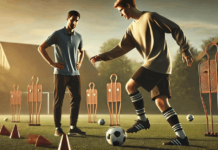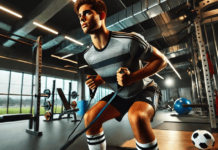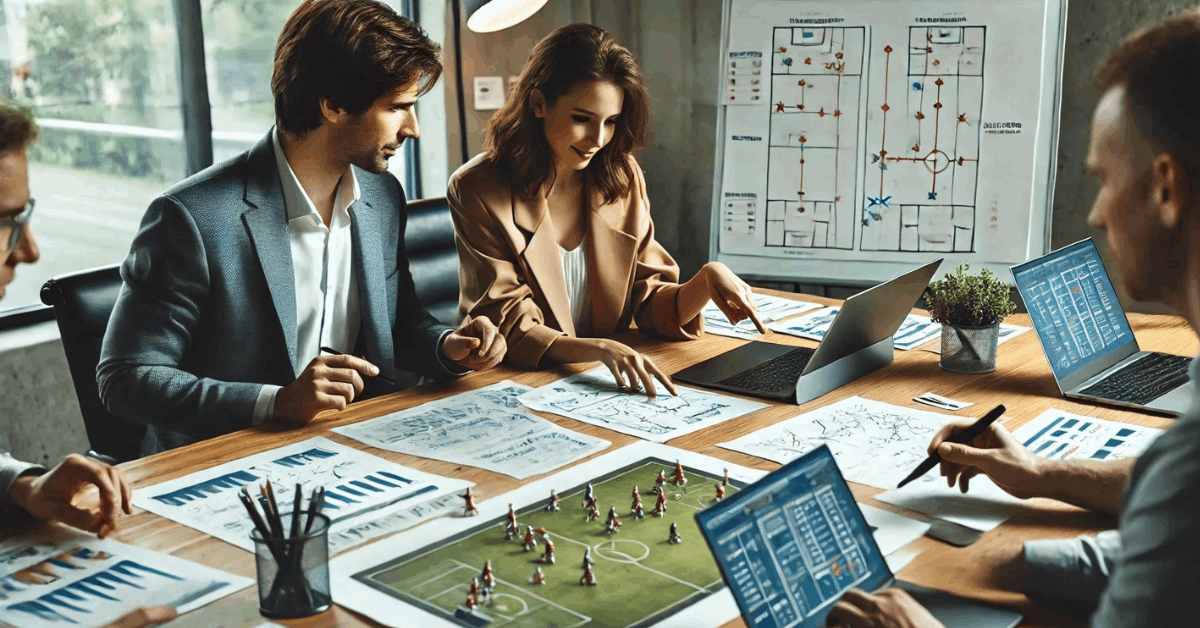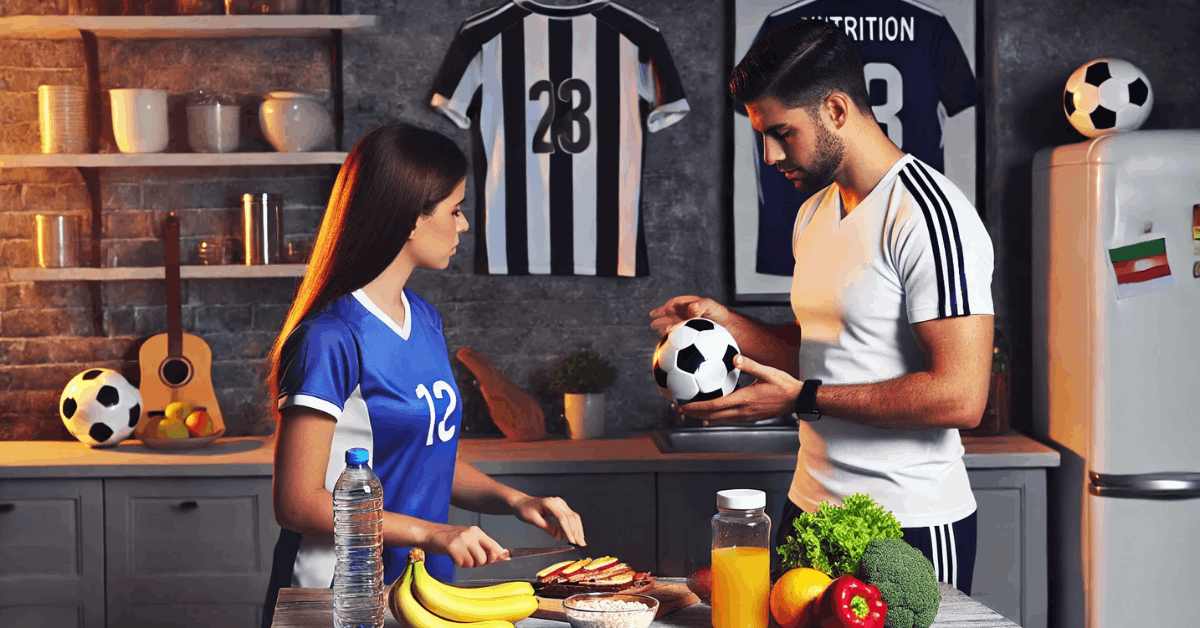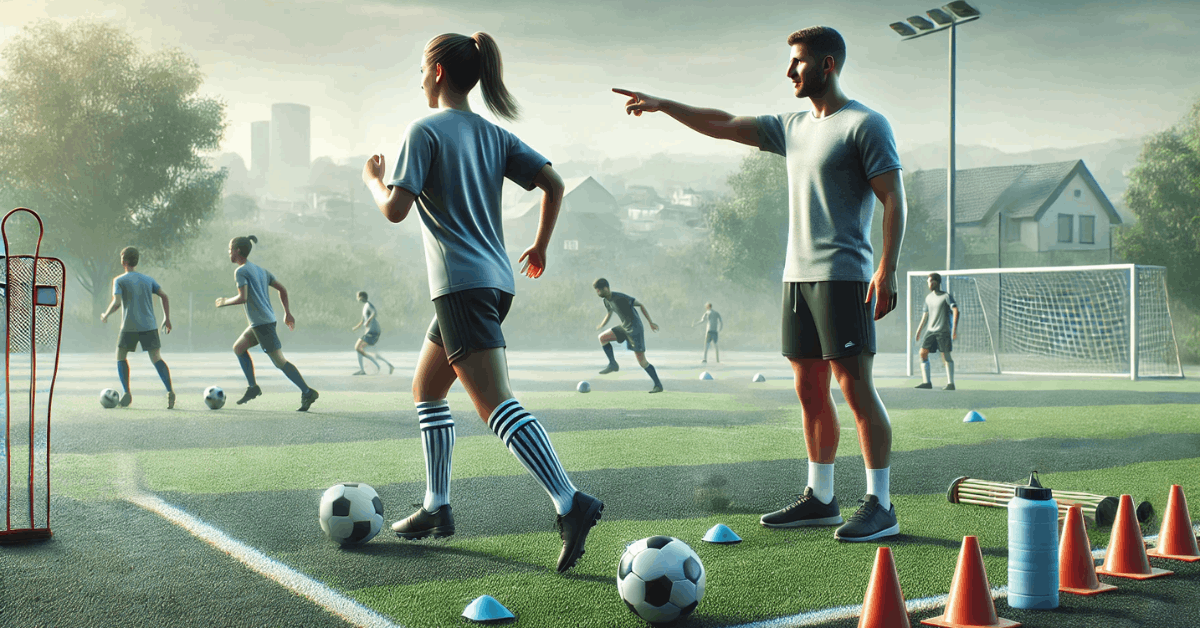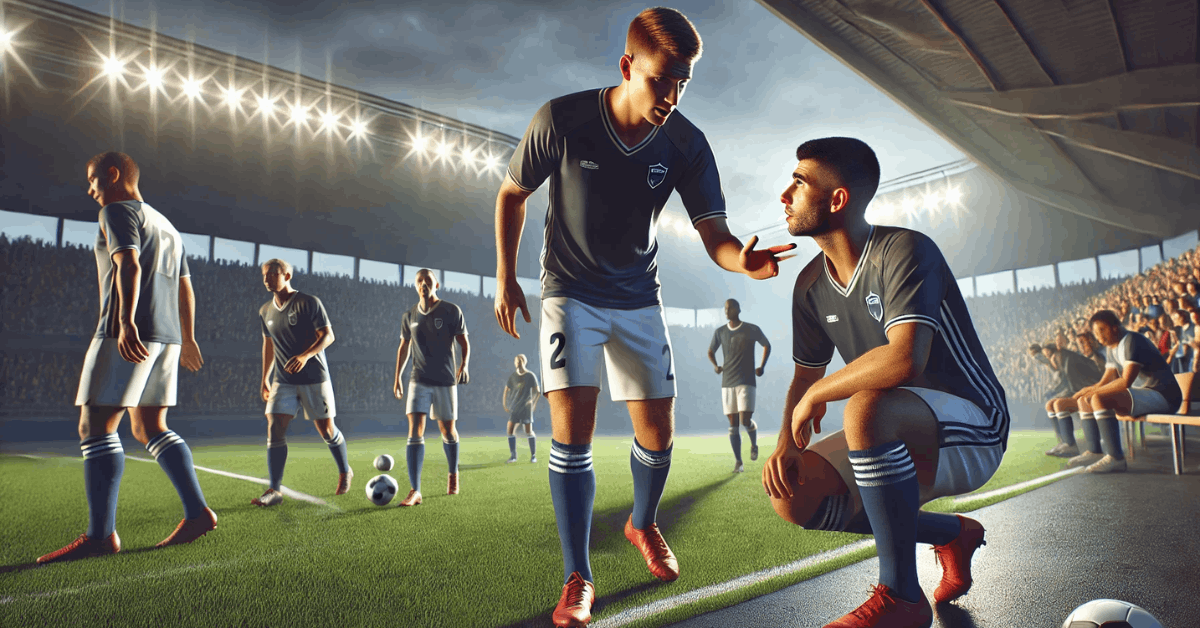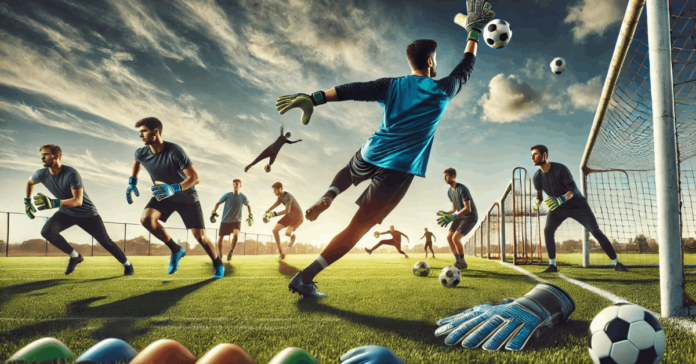
If you’re a soccer goalkeeper eager to boost your reflexes and agility, this guide is tailored for you.
It presents a range of dynamic reflex exercises crafted to enhance your reaction times and decision-making abilities on the field.
These exercises aim to refine your skills, helping you execute decisive saves effortlessly. Prepare to advance your goalkeeping skills, which are accessible to aspiring goalies worldwide.
Training Essentials for Aspiring Goalkeepers
To train as a goalkeeper, the saying “practice makes perfect” applies just as much as it does in any sport. Enhancing your skills requires dedicating extra time to training, regardless of your current skill level.
Instead of simply playing with friends at a local pitch, it’s advised to train under the guidance of a skilled coach.
Engaging in at least one structured training session per week with a coach and establishing a tailored goalkeeper training plan will significantly benefit your development.
How Do You Identify a Good Goalkeeper Training Session Plan?
A successful goalkeeper training session hinges on understanding that each goalkeeper has unique needs and abilities.
The best training plans are those that are carefully adapted to the individual, catering to their specific strengths and addressing their weaknesses.
This ensures not only skill development but also personal confidence and growth.
Personalized Training
A robust goalkeeper training session plan must be uniquely tailored to each individual.
This customization is crucial because a uniform approach does not suit all goalkeepers, each of whom has their own set of skills and weaknesses.
For instance, while one goalkeeper might need to focus on ball-handling drills due to difficulties in catching, another may require exercises designed to build confidence in making significant dives.
Balancing Rigor and Enjoyment
It’s essential to design training sessions that are both effective and enjoyable. To avoid monotony and maintain enthusiasm, a diverse array of drills, exercises, and practice matches should be incorporated.
This variety ensures that training remains a pleasurable part of engaging in the sport, providing a balance between hard work and fun.
Maximizing Coaching Sessions
To see substantial improvement, goalkeepers should engage in frequent training beyond the standard weekly team sessions.
Tailoring solo sessions to reinforce familiar drills and focus on general fitness can complement more targeted, coach-led sessions that address new skills and specific weaknesses. This strategy ensures comprehensive development and faster progression in skills.
The Best Exercises for Goalkeepers
The top exercises for goalkeepers worldwide focus on preparing the body for the dynamic demands of the position.
Goalkeepers need agility and power to make swift, high saves. Exercises are designed to enhance strength, coordination, and agility.
Drop Squat Jumps
This drill teaches goalkeepers to safely absorb the impact of landing—a crucial skill used repeatedly throughout their careers. It also minimizes the risk of knee injuries from improper landings
Start with feet shoulder-width apart. Bend the knees and execute a powerful jump. Land on bent knees and sink into a deep squat, then repeat.
Tuck Jumps
This exercise boosts the force of jumps, helping goalkeepers to leap higher and strengthen leg muscles.
Similar to the drop squat jump, begin with feet apart. Drop into a squat, jump high while lifting the knees towards the chest, and land gently with knees bent before repeating.
Lunges
Lunges build leg strength and improve balance and control, essential for goalkeeping. The exercise’s intensity can increase by adding weights as proficiency improves.
Start with one foot forward. Lower the body by bending the knee of the front leg without altering the back’s posture. Slowly rise back to start and switch legs after completing a set.
Introduction to Goalkeeping Drills
The journey begins with foundational goalkeeping exercises that enhance core skills essential for newcomers. Starting with effective warm-up routines, beginners learn to approach diving for saves without hesitation, enhancing their footwork and catching skills.
Inclusive Warm-Up Drills
Goalkeepers, often viewed as peripheral during matches, benefit significantly from integrated team warm-ups.
These sessions, involving the entire squad through games, stretches, and drills, boost team cohesion and ensure goalkeepers feel part of the group.
Mastering Diving Drills
For beginners, diving may initially seem daunting, but mastering this skill is crucial. Starting with low dives helps ease into this skill.
Set up a mini-goal using cones, with goalkeepers practicing diving from one cone to another to block the ball, ensuring safety through minimal height dives and protective gear.
Enhancing Footwork
Quick footwork and agility are vital. Drills that require shifting weight rapidly from one leg to another are integral.
Using a line of cones leading to a goal, goalkeepers weave through, focusing on speed and balance, to prepare for quick directional changes during games.
Handling Drills for Coordination
Combining reaction and catching drills, these exercises focus on improving hand-eye coordination and response times.
Using a two-meter-wide goal, goalkeepers practice catching and returning balls from various angles, enhancing their ability to handle unexpected shots in games.
What Does Reflex Mean in Goalkeeping?
In goalkeeping, “reflex” refers to the goalkeeper’s ability to react swiftly to shots at goal. This quick response is crucial because goalkeepers have only moments to react to block the ball.
As such, a goalkeeper’s reflexes are fundamental to their role on the pitch, distinguishing them from other players. Training to enhance these reflexes is essential for goalkeepers aiming to elevate their game to the highest levels.
Can One Enhance Their Reflexes?
Yes, improving your reflexes is achievable through targeted practice and consistent training. Engaging in sports or activities that require quick responses, like ping pong or martial arts, proves beneficial.
Goalkeepers, particularly, should focus on drills designed to boost their reflex speed and accuracy, as these exercises help to sharpen the neural connections involved in rapid reactions.
What Is the Reason for My Poor Reflexes?
Several factors, including inadequate sleep, a non-active lifestyle, or aging, might contribute to less-than-optimal reflexes.
However, enhancing your reflexes is possible by adopting a more active lifestyle, participating in coordination and agility drills, and ensuring you get enough quality sleep.
By actively working on these areas, you’ll likely notice an improvement in your reflex speed.
Advanced Goalkeeping Drills: Essential Exercises for Aspiring Goalies Worldwide
The role of a goalkeeper has dramatically transformed, incorporating both age-old techniques and cutting-edge technology.
Modern goalkeeper training encompasses complex sessions focusing on both physical prowess and mental agility.
For example, simulation technology enables goalkeepers globally to engage with virtual adversaries, sharpening their reaction times and strategic decision-making under pressure.
Mastering Shot-Stopping Techniques
Shot-stopping is pivotal to goalkeeping. It demands that goalkeepers predict the shooter’s next move and respond rapidly to intercept the ball.
Different techniques are employed depending on the shot type:
- For low shots: Quick, downward motions are essential.
- For high shots: Goalkeepers must leap and extend their arms fully.
Practical drills, such as facing multiple attackers who shoot from varied angles, simulate real-game scenarios enhancing a goalkeeper’s shot-blocking skills.
Goalkeeper Fitness Drills
A goalkeeper’s performance is heavily reliant on their physical condition. Exercises aimed at improving flexibility, strength, and endurance are critical:
- Strength training: Engaging in squats and lunges builds leg strength, which is vital for dynamic jumps and dives.
- Agility drills: Ladder and cone drills boost quick footwork, which is essential for effective goal coverage.
- Endurance training: Activities like running or cycling enhance stamina, ensuring sustained high performance throughout a match.
Goalkeeper Positioning Strategies
Strategic positioning is often the deciding factor in making a save. It involves optimal placement to intercept the ball, blending anticipation with an acute understanding of the game’s flow:
- In one-on-one situations: Goalkeepers should position themselves slightly forward, maximizing their presence to reduce the shooter’s angles.
- During corners and free-kicks: Anticipating the ball’s landing spot is key, positioning to either catch or clear the ball from danger zones.
Coaching feedback or video analysis tools can significantly advance a goalkeeper’s positioning and tactical choices, which is essential for aspiring goalies everywhere.
Safety Guide
Safety is paramount when engaging in goalkeeping drills. Adhering to these safety protocols is essential to ensure a secure environment for all aspiring goalies worldwide.
1. Wear the Right Gear
Safety starts with the proper equipment. Aspiring goalies worldwide should invest in helmets, gloves, and padded clothing to protect themselves during drills.
This gear is crucial for preventing injuries, particularly during high-impact activities.
2. Warm-Up Properly
Before diving into intensive goalkeeping drills, a thorough warm-up is necessary.
Stretching and light cardiovascular exercises prepare your muscles and joints, reducing the risk of strains and sprains. A good warm-up sets the stage for a safer and more effective training session.
3. Maintain Clear Communication
During drills, clear communication with coaches and teammates is essential. This helps in coordinating movements and avoiding unnecessary collisions, ensuring that the practice environment is safe for everyone involved.
4. Hydrate and Rest
Regular hydration and adequate breaks are vital, especially during prolonged or intense training sessions. Aspiring goalies should drink water consistently and rest when needed to maintain peak performance without risking overexertion or heat-related issues.
Conclusion
If you are starting out or have been a goalkeeper for a while, get ready for your next training by checking out the goalkeeper kits and training wear at Avec Sport.
They offer everything from goalkeeper training kits that boost performance to training jerseys that are comfortable and flexible, suitable for everyone on the team.
Gear up for your upcoming practice with the right essentials from Avec Sport, catering to goalies worldwide.

